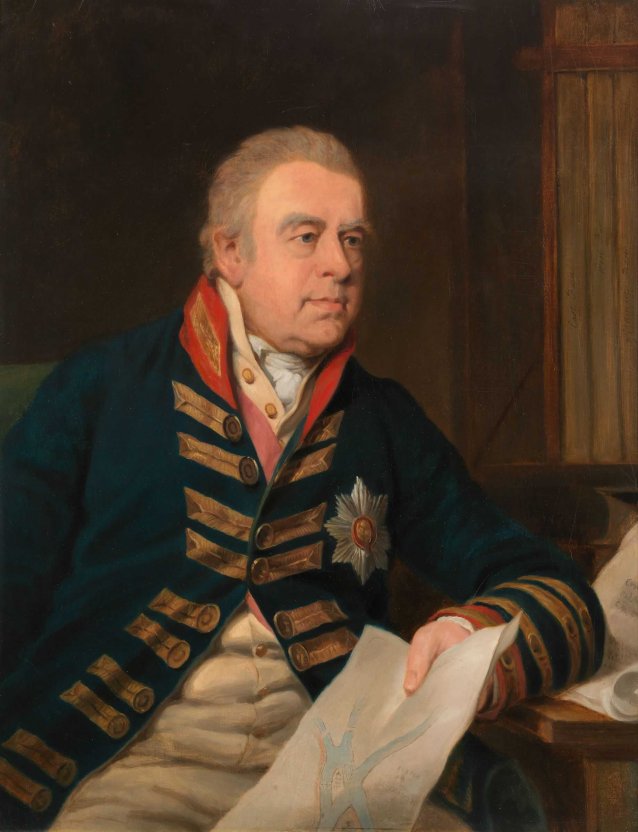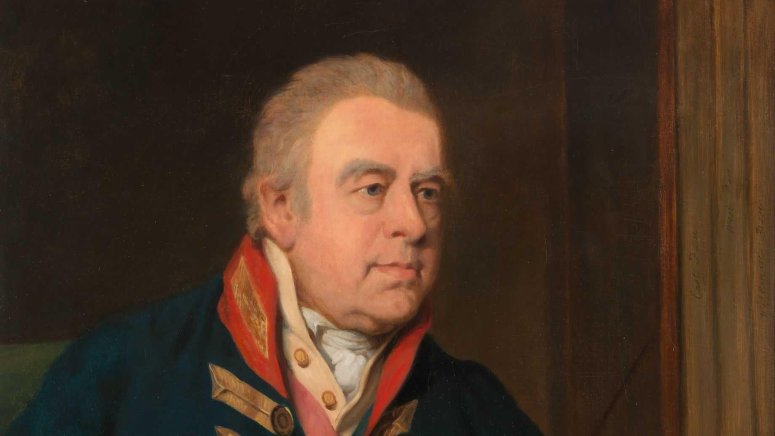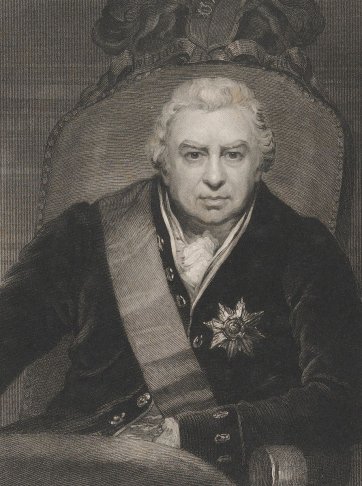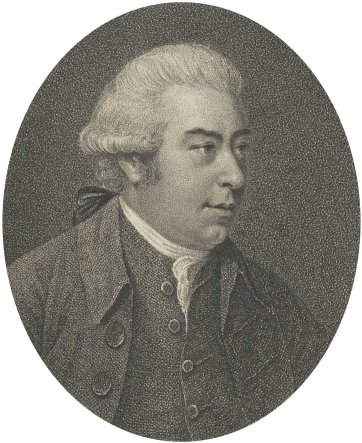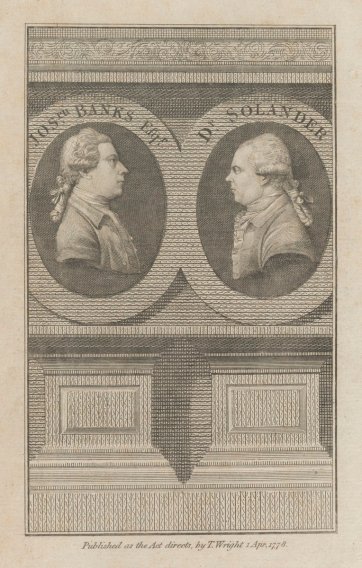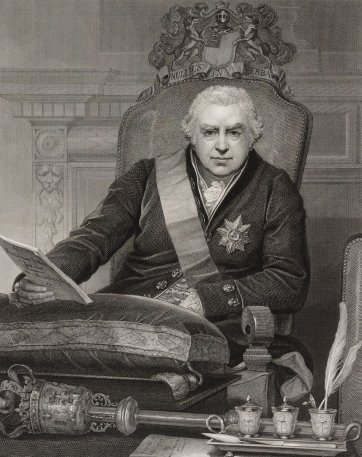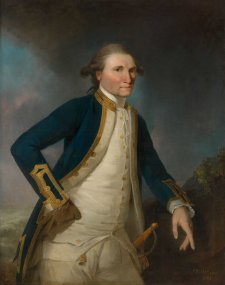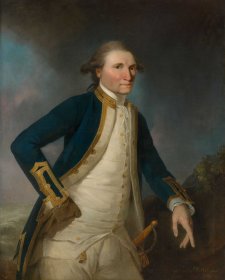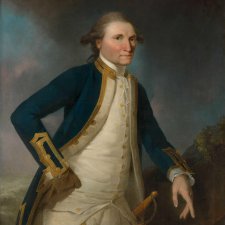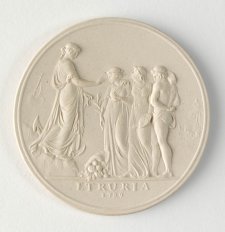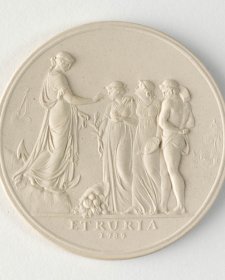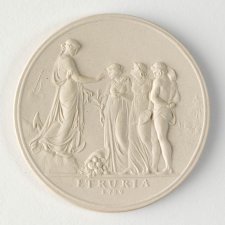This oil on canvas portrait of celebrated explorer and botanist, Joseph Banks, measures 104.4cm tall by 93.2cm wide.
Seated with his body fully occupying the centre foreground and lower left of the image, Sir Joseph Banks faces towards the viewer though his gaze travels out, beyond the right of the frame. In a navy, gold and red navel jacket, an 8-pointed silver star at his breast, he holds a paper map, his powdered hair and fleshy face in a closed, thoughtful expression.
His skin stands out against the portrait’s mud-brown background. On the right, repurposed wooden planks are lined up vertically, perhaps a door or a window.
Bank’s short, coarse, grey hair is flecked with brown and tufts upward, in an even,
woollen-soft, textured frame around his face. A distinct hair line arcs across his forehead, slightly up and around the right side of his pale face, ending at the lobe of his large, right ear. Underneath thick eyebrows; textured like his hair, his blue eyes stare.
Banks’ nose is long and straight. His upper lip purses inside a fuller, lower lip. His slightly dimpled, full chin and the folds of his neck are cradled by two, layered, open high collars, each with two, gold buttons. They reveal a snug-fitting white, collared undershirt.
The rest of his white shirt is covered by a long, cream waistcoat. The high collar of his Naval jacket is red, thick and felted, a horizontal band of embroidered gold tapering to the collar’s upturned, front edge.
Down Banks’s front, two of the 10 buttons of his jacket hold the fabric together at his chest, it splits wide at his front, allowing for the spread of his middle.
Each large, circular, jacket button marks the end of a embroidered, gold, horizontal band of embellishment. These descend uniformly from the red collar down the length of the navy , red and gold jacket, a contrast to the cream, white and earthy tones of his waistcoat, shirt and surrounds. A large, decorative, 8-pointed silver star rests on the left breast of his jacket. This star and a strip of pale, red sash peeking out near his collar, signify Banks membership within the prestigious Order of Bath.
His leans his elbow on a wooden desk, three matching gold bands precede a red and gold cuff. Under his elbow other papers curl off, and to the right of the image.
In his left hand he holds a sheet of paper with pale blue markings, like that of a map. The surface of the paper reveals a play of light; bright from the top and fading to a dull, soft shadow at the lower edge of the frame.
Audio description written by Meredith Hughes and voiced by Rory Walker
